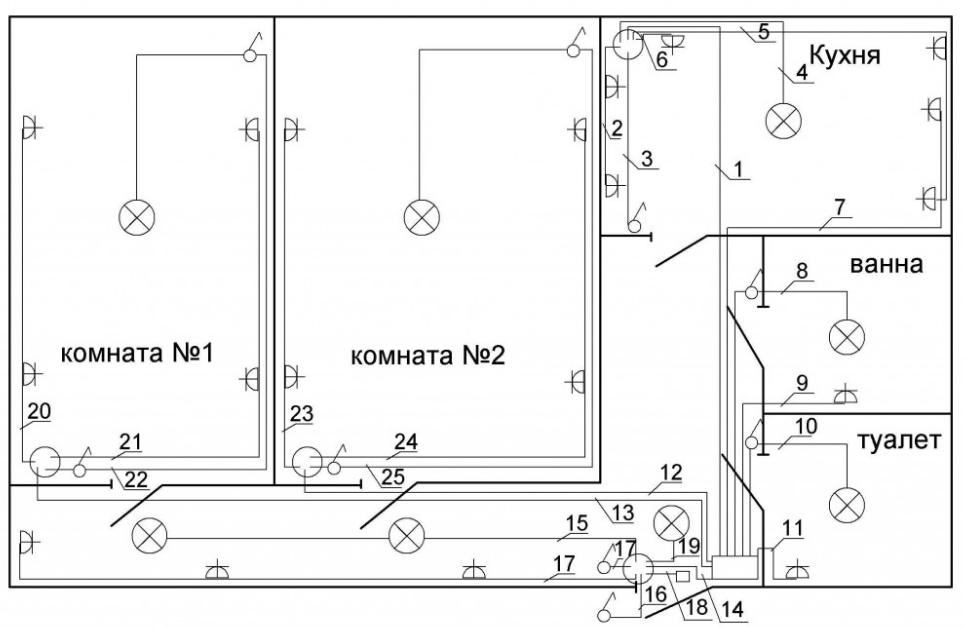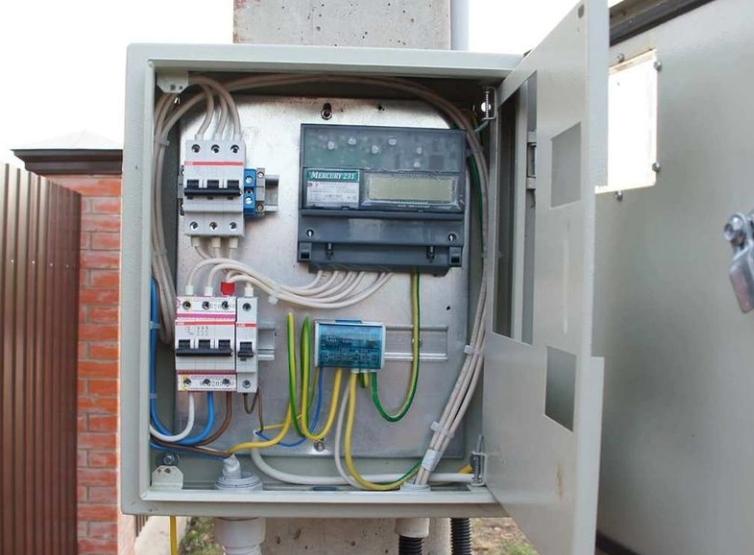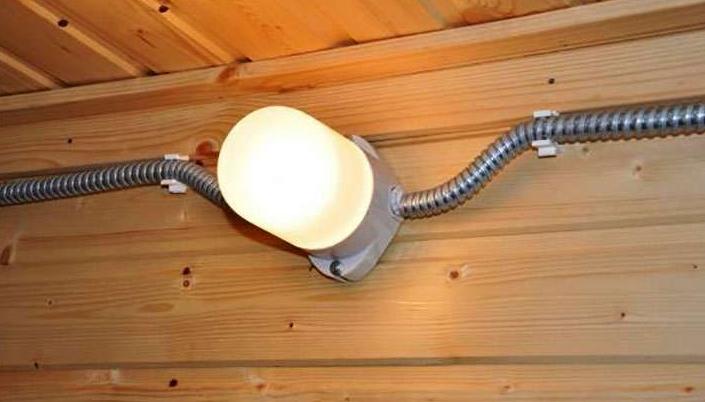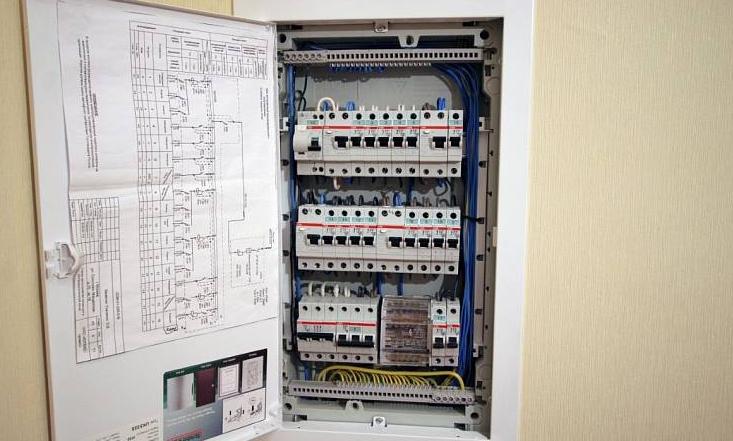Planning and installation of lighting inside a private home
Lighting in a private home is different from the apartment, because here you have to determine the location of devices, lay the cable and other mandatory work. While in apartment buildings standard solutions are used, in the private sector you can implement any option that meets safety standards.
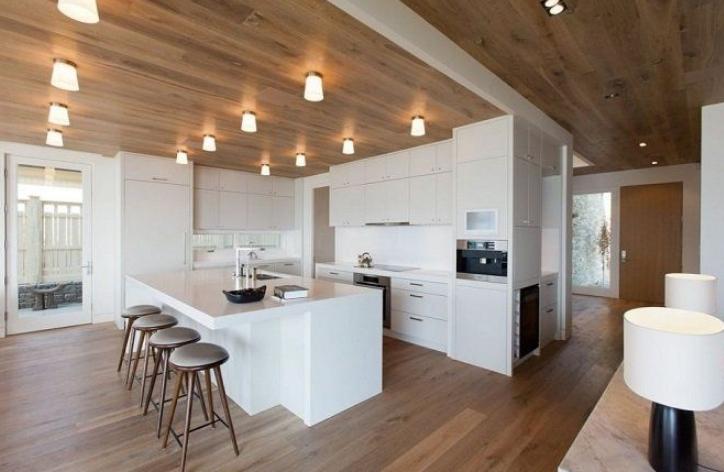
How to plan the lighting of a private home
You can not work without a clear plan, so first of all you need to make a detailed project. This is a mandatory requirement of SNiP and PUE, you can not violate it. When planning it is necessary to take into account several recommendations:
- It is necessary to make a project in accordance with the established requirements, so it is better to entrust the work to specialists. Most often, this is done by the same organization that makes the project of the house.
- To avoid problems, you need to think in advance about all the important points: the location of the equipment in the rooms, the number of outlets and switches. It is also important to consider all lighting equipment.
- To simplify the process, you can use standard projects, if the layout of the house allows it. They greatly simplify planning and make it cheaper.
- The way of laying wiring and location of junction boxes is thought out.
- Ready-made project must approve in a supervisory organization. Without this, you can not start installation work.
- When developing the project it is necessary to determine the place of entry of power cable into the house, the location of the counter and the switchboard.
If alternative energy sources will be used - solar panels or generator, they also need to provide in the project. If such solutions are put later, it is worth bringing them into the project and agree it, so as not to have problems and not have to pay a fine.
Bringing electricity to the switchboard
In norms PUE indicates two options for connecting cables - overhead line and through the underground wiring. It is worth noting that almost always organizations that carry out the connection, use the overhead method, the underground method is resorted to only in exceptional cases. With regard to connection, there are a number of conditions:
- According to the rules, the switchboard must be located in a place convenient for service. Most often it is placed at the edge of the site, so that representatives of the power supply company can check the condition.
- If the distance from the nearest pole to the switchboard is more than 10 meters, you must install additional support. The cost of its installation will be borne by the customer, which increases the budget. If the wire goes across the road, the height of its location should not be less than 6 meters.. That's why you can't put low poles.Often the switchboard is fixed directly to the pole from which electricity is supplied.
- For the connection from the line to the switchboard, as a rule, use a wire CIP with an insulated phase, in some cases it is a zero. This makes the connection safer.
- The wire at the inlet to the house should be placed at a height of at least 275 cm. It is important to anchor it to a solid structure, and the insulators should be placed at least 20 cm from the surface of the house.
- Through the wall wire should be led only through a pipe made of metal or a special insulating conduit. When laying, you must do this part so that moisture can not accumulate inside.Open type wiring should be laid in corrugations.
- Sometimes the meter is placed on the outer surface of the wall (for example, in cottages and country houses). In this case it is necessary to protect the wire from damage. If the wall is made of brick or other non-combustible material, you can use plastic conduit. If the wall is wood, you will need steel pipe or metal conduit.
Requirements for a group panel
This is the name of the panel, from which the lighting of the house is distributed. Before obtaining a permit to use electricity, you need to assemble the panel, so that a representative of the supervisory authority checked it. Here you need to remember the following:
- Ideally, the panelboard should be in a location from which there is about the same distance to most of the rooms in the house. This will save on cabling. Also, when choosing a location, you must consider a number of PUE requirements for the location of the switchboard.
- All dry rooms are suitable for installation, you can even use the basement provided that it is not flooded. If there is a risk of flooding, the switchboard is placed so that it does not get into the water under any circumstances. It is important to provide easy access to all elements inside the box.A built-in switchboard is very convenient.
- You can not put the panel under the bathroom, toilet, kitchen and other rooms, which can flood the space below.
- Another limitation is the distance to the pipes, which must be at least a meter. And it does not matter what kind of pipe runs next - gas, sewer, water or heating.
- If possible, the cabinet is recessed into the surface completely or partially. But on surfaces made of wood, it is worth using only overhead models. And, choose non-combustible varieties of shields.
- When there is a counter in the panel, it is necessary to choose a model with a compartment for its installation. These versions have a small glass that you can read without opening the door.
Shield must be locked with the key is mandatory!
Types of lighting for different rooms
Lighting in a private home inside can be of two types - natural and artificial. The first option depends on the size of the window openings, their location relative to the sides of the light and the weather. The second is much more important, because with it you can normally illuminate the house at any time of day.
Types of lighting and their features
There are several options, differing in purpose and the equipment used. Therefore, you need to understand each in order to provide comfortable light in the house:
- General lighting. Most often it is one or more chandeliers With several plafonds. Located in the middle to evenly illuminate the room. Instead of the classic version can be used light panels or spotlights, located in large numbers on the ceiling.
- Local lighting. Needed in order to highlight certain areas or provide a comfortable environment for work, crafts, eating, etc. In this case recessed, overhead, wall lights are used. Also suitable are portable variants - floor lamps, table lamps, etc.
- Decorative Lighting. Needed for decorating the room and highlighting individual elements. You can use this option to highlight niches, the contours of the room. Here are especially widely used modern solutions - LED strips, compact luminaires with directional light, etc.
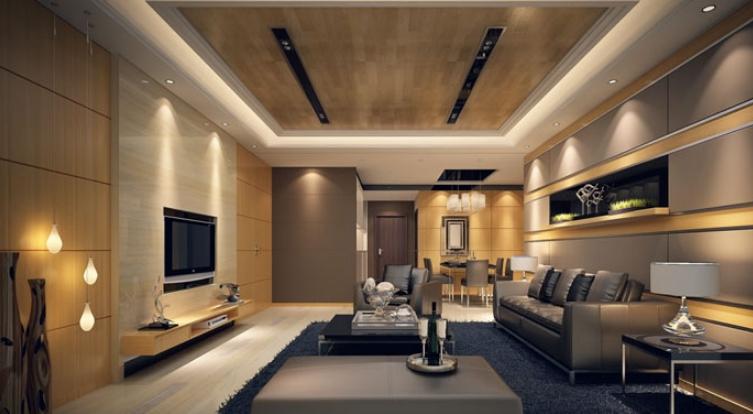
Light sources
To make sure the light is of high quality and provides a comfortable environment, you need to make the right choice:
- Incandescent bulbs. - Cheap, but not very good quality. They do not last long, give only yellow light and get very hot when working. Consume the most electricity.
- Halogen options are much better, because they give light that is close to daylight. But at the same time also consume a lot of electricity, a lot of heat and do not last very long.
- Fluorescent . are much more economical, give bright light and do not warm up when working. But it can flicker, and mercury vapor is used inside, which is dangerous if the bulb is damaged.
- LED lamps are the best solution, which is characterized by cost-effectiveness, a lifespan of 50,000 hours and low heat. The quality of light is the highest.
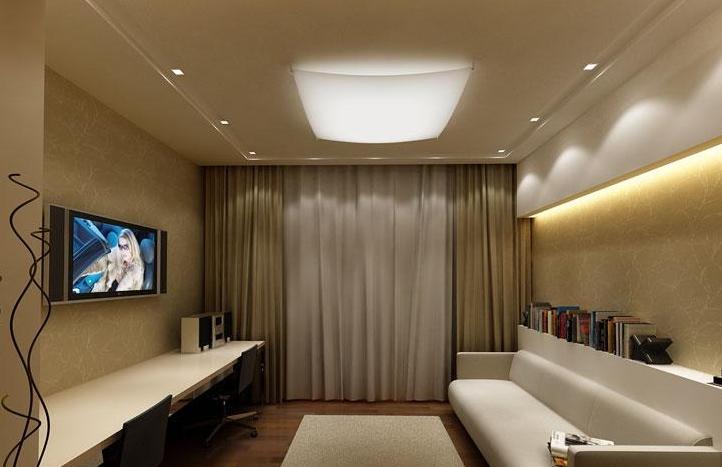
When using different light sources in the room, it is better to select lamps with the same color temperature.
Lighting control inside the country house
Modern trends are that in homes use more and more means of automation. But traditional solutions are also in demand. You can control your lights in many different ways:
- Standard switches - The simplest solution. They come in all shapes and sizes.
- Motion and sound sensors turn on equipment when a person enters the room.
- The remote control allows you to turn lights on and off and adjust their brightness from anywhere in the room.
- Smart Home System helps you control the light from your phone or computer, even if the person is not at home.
At the end of the video, which describes in detail the budget option lighting system (in his house)
When setting up a lighting system in the house, you need to make a project, approve it and lay the wiring strictly according to the scheme. It is important to properly install the panels, think through the lighting system and buy quality and durable lamps.
